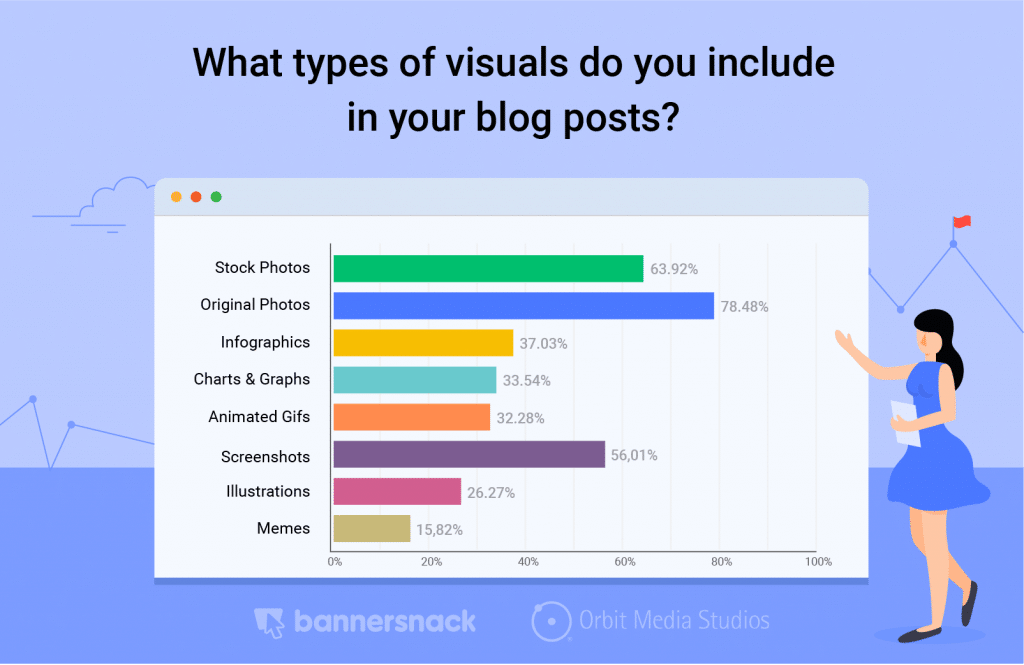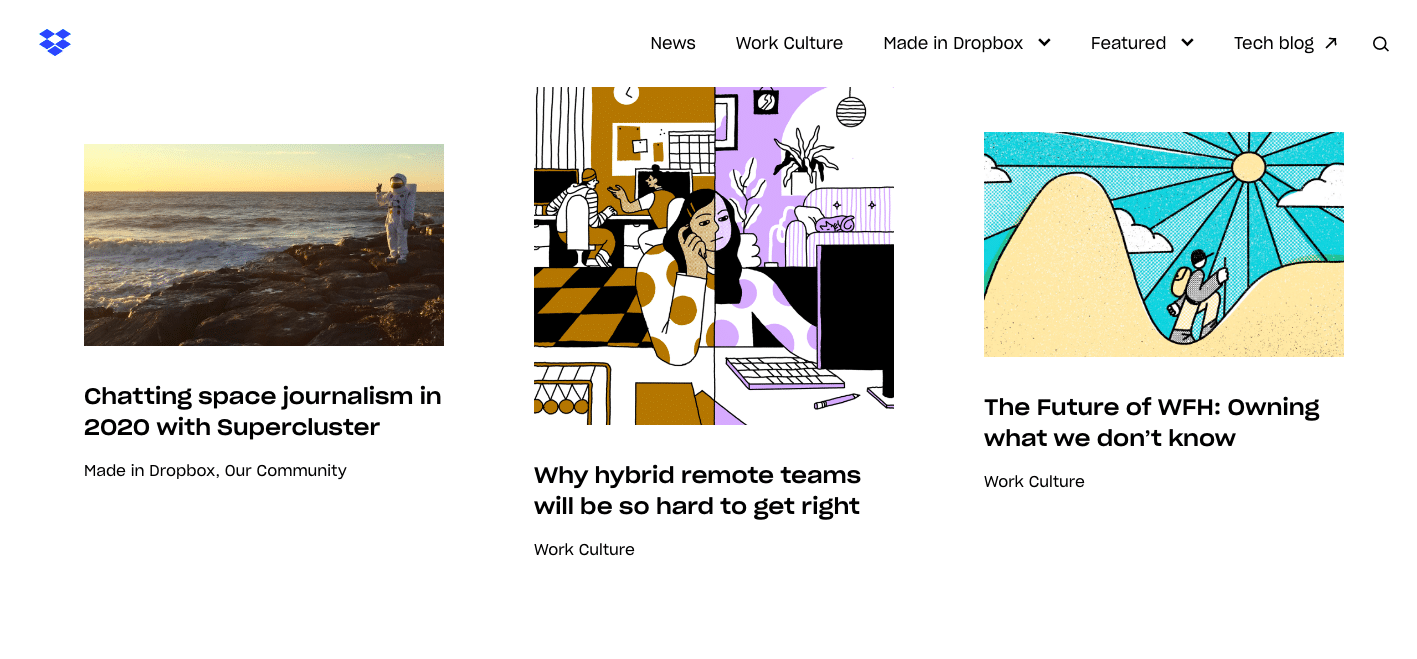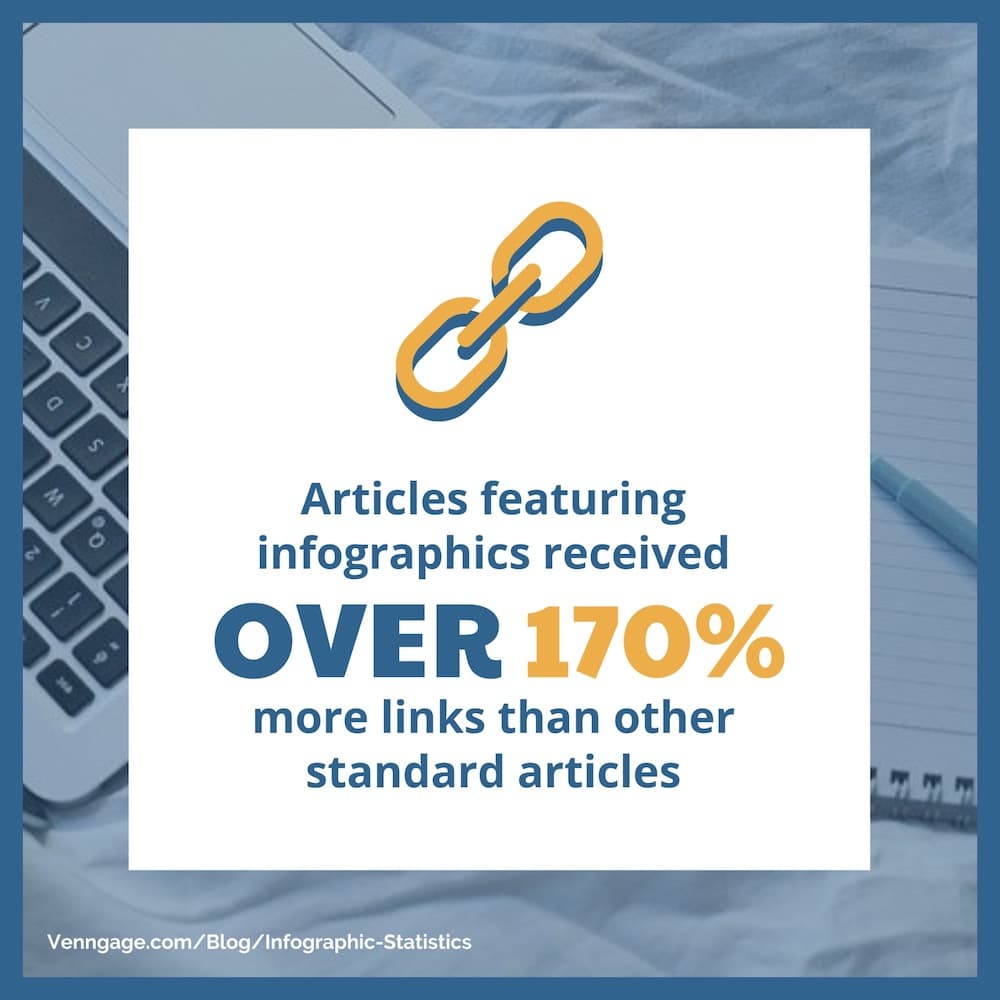
Blog Design 101: How to Get Visuals, Images & Video Right in Your Posts
Successful blogging is about more than just great writing.
Publishing a blog post without images is like serving a meal without seasoning.
The main ingredients might be there, but your audience won’t come back for seconds.
Crafting the perfect blog design for success means ensuring each of your posts is illustrated with images and videos to complement the text, provide more visual interest, and make your post more attractive and accessible when scanned quickly.
Articles that include images get a staggering 94% more views than those with no visuals.
Visual content is also shared more readily than text-only content. Data from analyzing over 5.8 million articles showed that posts containing infographics were some of the most popular on social media, and increasing the number of images in a post can increase the number of social shares it receives.

Embedding video in your blog posts can be incredibly valuable too. Blog posts that include videos attract 3x more links and encourage readers to stay on your site for longer, which is an important ranking factor for Google and other search engines.
But there’s more to great blog post design than simply throwing in a few stock images. If you want to know the ideal recipe for blogging success, keep reading for our guide on how to structure your posts for optimal traffic, engagement, and social shares.
Quick Takeaways:
- The images you use in your blog posts are as important as the written content
- Keep the visual formatting of your posts interesting and eye-catching to attract readers and increase conversions
- Video can also be very effective and doesn’t have to be expensive or time-consuming to produce.
Choosing the Right Images
Images often aren’t essential to understanding your post’s content, but they help to add visual interest to the post, break up the text so it’s easier to scan, and just as importantly, attract people to the post in the first place.
We all know you’re not supposed to judge a book by its cover, but in practice, that’s exactly what happens. When you’re browsing a blog homepage, you’ll likely choose the posts to read based not only on their title but also on their thumbnail header image.
Remember, these images are also pulled into links that are shared on social media, so it’s important to choose something that:
- Is on brand and represents the style and tone of your blog
- Reflects the content of your article
- Is eye-catching and attractive
Stock photography is one of the most popular types of images to use in blog posts because they’re so affordable and accessible.
Almost 64% of bloggers surveyed use stock photos in their blog posts.

There’s nothing wrong with using stock photos but you should choose them with care.
Make sure you choose imagery that complements your brand personality and avoid clichéd images. Popular free stock images tend to show up all over the web and can dilute your brand, so it’s best to pay a little more for higher quality and more original images.
If you have the resources available, original images are a step up from stock photography, as long as they are of high quality.
Including photos of your business premises and employees make your content more unique and personal and can add an air of authenticity to your brand.
Illustrations can be a good alternative to photographs with some unique benefits. Have you ever had the perfect image in mind for your blog post but just couldn’t find the right photograph? When you create your own illustrations, you can depict literally anything you want.
Original illustrations can also be an effective extension of your branding and can make your blog stand out from your competitors.
Dropbox combines original photography and illustrations in its blog to make it feel more like an online magazine and elevate it from standard corporate and tech software blogs.

However, it can be time-consuming and expensive to create custom illustrations. Stock illustrations and semi-original illustrations (created with a library of pre-illustrated elements) are available as a quicker, cheaper alternative.
Creating Original Charts and Infographics
If your post contains a lot of data or statistics, displaying it visually is an excellent aid to understanding.
Visual charts and infographics can also attract a lot of links and shares. As it takes some time and effort to create these visuals, other content creators will often search for pre-existing images rather than create their own.
Infographics, in particular, are very effective for attracting links and social media shares. Some studies have shown that including infographics in content can boost traffic by up to 12%. Infographics are 30x more likely to be read from top to bottom than articles.

These days, infographics are easy to create from scratch using specialist design software that comes with a library of pre-designed templates and elements for you to use. You can also outsource infographic creation to a designer with prices starting from just a few dollars.
Video Tips for Bloggers
You can no longer deny the importance of video as online content. 54% of consumers want to see videos from brands they follow, and videos are consumers’ favorite type of content to view on social media.
Source: https://id.oberlo.com/blog/video-marketing-statistics
Creating videos can seem like an ambitious and time-consuming endeavor when you’re used to publishing mostly written content, but not every video needs to be a huge production.
These days, everyone has a decent quality video recorder in the form of their mobile phone. You can easily make a quick five-minute video adding commentary on a blog post and have it ready to go within minutes.
Modern software also makes it easy to create videos from stock assets and existing content. You might want to take the major points from your article and turn them into a slideshow video. “Whiteboard” style animated videos are also very popular these days.
And don’t forget, there’s nothing to stop you from including videos that others have created in your posts. If a video is shareable on YouTube, you can include it in your blog post to help expand on your points and add value to your readers.
Blog Post Formatting and Design
Adding images is not the only way to add more visual interest to your blog posts. You can use many formatting techniques you can use to break up the text and make it easier to read and nicer to look at.
For inspiration, take a flick through a print magazine and note how each page is carefully designed with varying typography, colors, pull-quotes, boxes, and other visual elements.
Of course, every post you publish doesn’t have to be a design masterpiece. Indeed, the extra time taken to do this may well not be worth the effort. However, modern web publishing tools such as the block editor in WordPress have made it much easier and more efficient to add some visual interest to your blog posts.
Consider going through your posts before you publish and make sure you include at least some of the following:
- Bolded and italicized text to add emphasis
- Important points in separate boxes
- Formatted pull-quotes to make them stand out
- Bullet lists
- Headings and subheadings
If you’re outsourcing your blog content, make sure that your writers or agency know the importance of content formatting.
If you are ready to get more traffic to your site with quality content published consistently, check out our Content Builder Service.
Set up a quick consultation, and I’ll send you a free PDF version of my books. Get started today–and generate more traffic and leads for your business.






